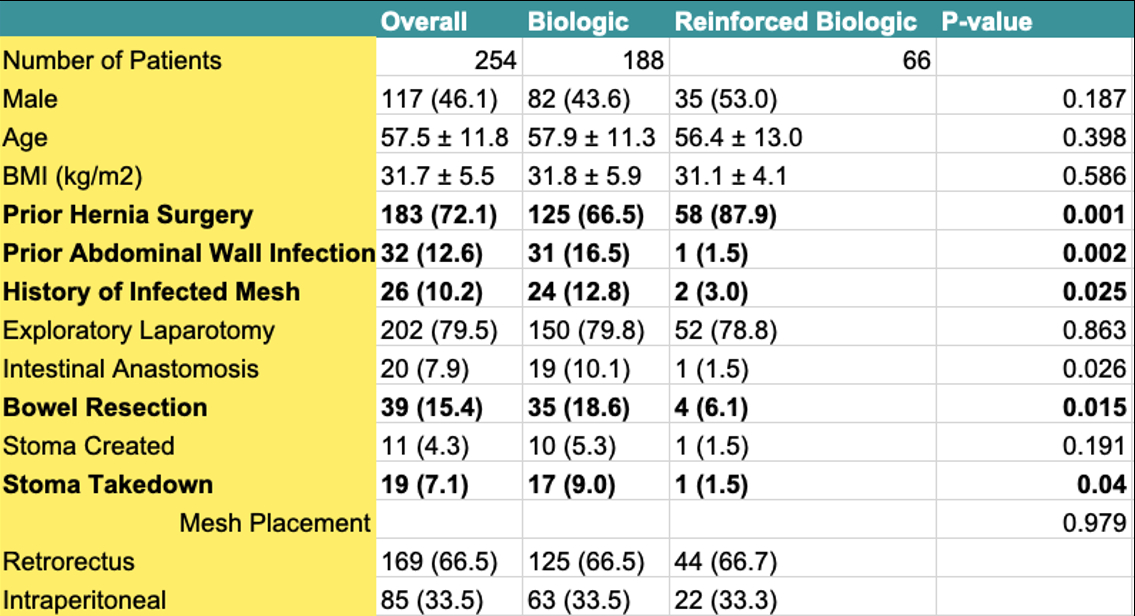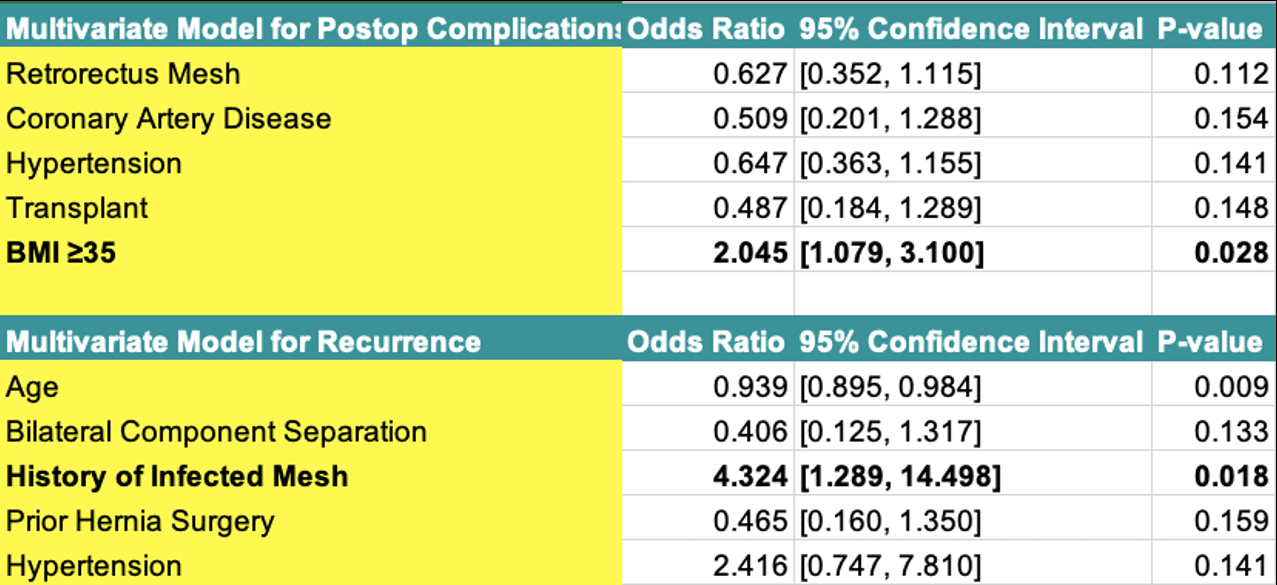Hernia Recurrence and Complications after Abdominal Reconstruction with Reinforced vs Non-Reinforced Biologic Mesh
Keith R. Sweitzer*, Aidan O'Shea, Claudia Tawil, Julia Tomtschik, nicholas hall, James Butterfield, Cody Fowler, Howard Langstein, Derek Bell
Plastic Surgery, University of Rochester, Rochester, NY
Ovitex is a combined reinforced biologic mesh with a permanent prolene suture weave that theoretically combines incorporation with a long term strength component. We hypothesize that a reinforced biologic will have a similar complication profile, but decreased long term hernia recurrence compared to non-reinforced biologic mesh.
Single center retrospective review from January 2013-January 2022. Baseline patient characteristics and outcomes were compared. Variables were analyzed with chi2 and Wilcoxon rank sum tests. Predictors of postoperative complications and hernia recurrence were analyzed via univariate and multivariate logistic regression with backward stepwise selection (threshold of p<0.2).
254 patients underwent abdominal wall reconstruction biologic mesh with retrorectus (66.5 %) or intraperitoneal (33.5%) mesh placement. 66 of these used reinforced biologic mesh. Mean follow-up time - 207 days. Component separation - (80.3% bilateral, 11.4% unilateral, 8.3% none). Reinforced biologic mesh did not impact 90-day complications (p=0.391) or hernia recurrence (p=0.349). Reinforced mesh had no impact on complications or recurrence (p>0.2). Non-reinforced biologics were used more in previous mesh infection (p=0.025), bowel resection (p=0.026) and at time of stoma takedown (p=0.04). Reinforced Biologics were used more with a history of previous hernia repair with recurrence (p=0.001). History of infected mesh was an independent risk factor for hernia recurrence (p=0.019) and BMI>35 for 90 day complications (p=0.028).
Reinforced vs non-reinforced biologics have similar risk profile and recurrence rate when primary fascial repair achieved. Limitations include the retrospective review and limited patient follow up (average of 207 days). Retrorectus or intraperitoneal placement of any biologic mesh is acceptable and should be chosen based off surgeon comfort, and anticipated cost saving of individual mesh brands. There may be a role for reinforced mesh in setting of previous failed hernia repair with weakened fascia, and non-reinforced in contaminated cases.

Back to 2023 Abstracts


